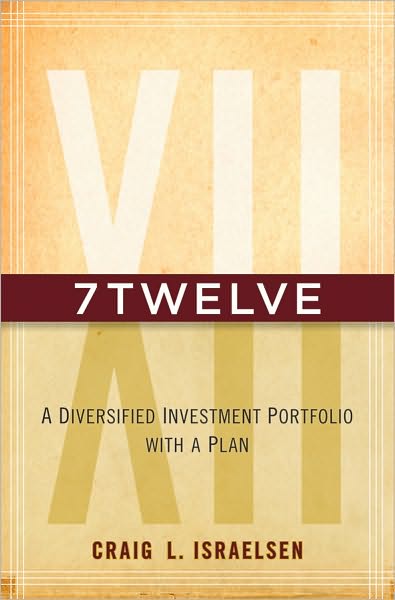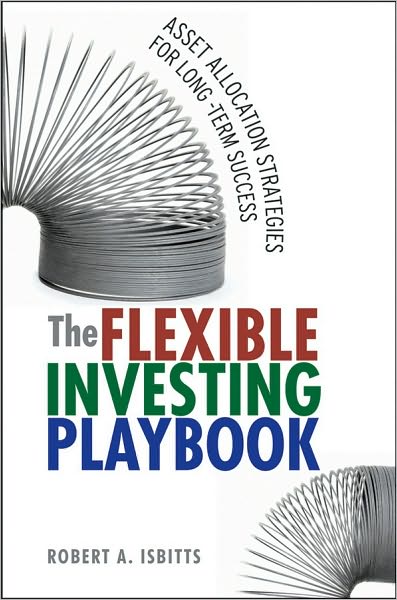When I get a book on asset allocation in the mail, I say to myself, “Another book on asset allocation?? What is there to say that is new on the topic?”
Tonight I review two decidedly different books, and end up praising the conventional book, and dissing the unconventional book.? Since I am not a fan of most conventional asset allocation, I am personally surprised by this result, but now let me explain why I reached this conclusion.
Where’s the Meat?
I don’t know about you, but personally, I hate books that talk big, and don’t reveal any of the significant details of their theories.? Can I figure out approximately how they did what they did?
Now, I am not looking for simple rule-based books either — “Follow this simple formula and make money!”?? But there should be enough to allow someone reasonably well-attuned to the markets to be able to say, “Yes, this is reasonable.? I don’t know all of the details, but I have some reasonable idea of how they did it.”
I don’t have that reasonable idea with The Flexible Investing Playbook.?? From what I can gather, they propose Dynamic Asset Allocation that is rather aggressive, trying to catch turns in markets.? I say aggressive, not because they advocate large moves; they don’t.? But the efforts to catch turns is a difficult endeavor, and they don’t give me enough grist for the mill, that I could set up my own approximate model for switching, if I wanted to do that.
One strength the book has is identifying alternative asset classes that can smooth the ride for investors.? Sadly, they don’t offer easy ways for investors to pursue these strategies.
On the other hand
7Twelve is static in asset allocation, urging investment in index funds (or active funds if you must), and rebalancing regularly.? The book urges investment in 12 index funds, which gives a very diversified mix.? The reason for the book’s name, is that the 12 funds have a limited track record, lasting from 2000-2009.? But an approximation to the 12, with only seven indexes, has a track record that goes from 1970-2009.
The twelve asset-subclasses are:
- Large, Medium and Small US Stocks
- Developed Foreign Stocks
- Emerging Foreign Stocks
- Natural Resources Stocks
- Commodities
- REITs
- Barclays’s Aggregate Bonds
- Inflation-protected Bonds
- Foreign Bonds
- US Cash
And the seven asset classes are:
- US stocks
- Foreign stocks
- REITs
- Resources
- US bonds
- Foreign bonds
- US cash
And the book shows how in the past, an equal weighted blend provided? better total performance, and even better when compared to return volatility.
One additional note, the clever cover art helps prove that seven is half of twelve at least if using Roman numerals.? No wonder Rome fell.
Quibbles
In 7Twelve, there is a lot of “past is prologue.”? It ignore the factors that made 1970-2009 a special environment:
- General peace.
- Declining volatility
- Increasing globalization.
It also ignores that not everyone could follow such a strategy because there would be scaling problems.? We would run out of small and midcap stocks, and emerging market stocks, and REITs and commodity stocks.? Even commodities would run up in price, and then provide subpar returns.
But if few follow such a prescription, such diversification could be wise, so long as there is no major war.? WW III can’t happen, right?
Who would benefit from these books:
I am not sure who could benefit from  The Flexible Investment Playbook.? As for 7Twelve, those lacking a sound diversification strategy could benefit.? The strategy is simple enough to implement.
The Flexible Investment Playbook.? As for 7Twelve, those lacking a sound diversification strategy could benefit.? The strategy is simple enough to implement.
Both books provide significant and clever commentary in investing, if that is enough to commend buying books.
If you want to, you can buy either here: 7Twelve: A Diversified Investment Portfolio with a Plan, or The Flexible Investing Playbook: Asset Allocation Strategies for Long-Term Success.
Full disclosure: I received each book from the publisher; I don’t think I asked for either one.
If you enter Amazon through my site, and you buy anything, I get a small commission.? This is my main source of blog revenue.? I prefer this to a ?tip jar? because I want you to get something you want, rather than merely giving me a tip.? Book reviews take time, particularly with the reading, which most book reviewers don?t do in full, and I typically do. (When I don?t, I mention that I scanned the book.? Also, I never use the data that the PR flacks send out.)
Most people buying at Amazon do not enter via a referring website.? Thus Amazon builds an extra 1-3% into the prices to all buyers to compensate for the commissions given to the minority that come through referring sites.? Whether you buy at Amazon directly or enter via my site, your prices don?t change.



I wonder if it would be better to have a static allocation across sectors + a total bond market ETF rather than the arbitrary selection given.
I don’t like the idea of getting foreign equities and domestic equities and calling it diversified. Industry trends span borders.